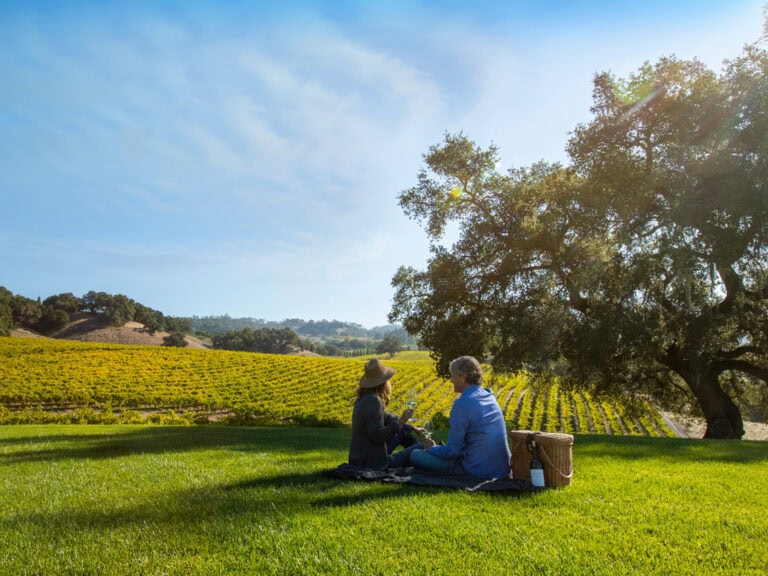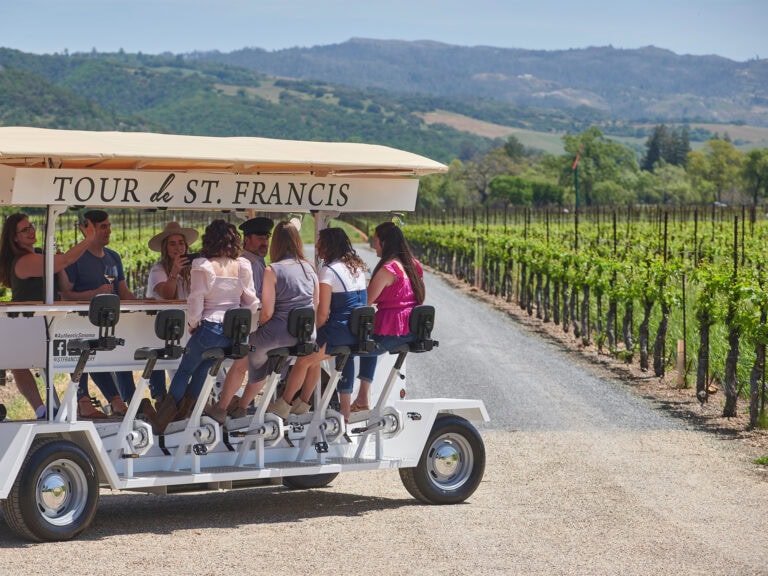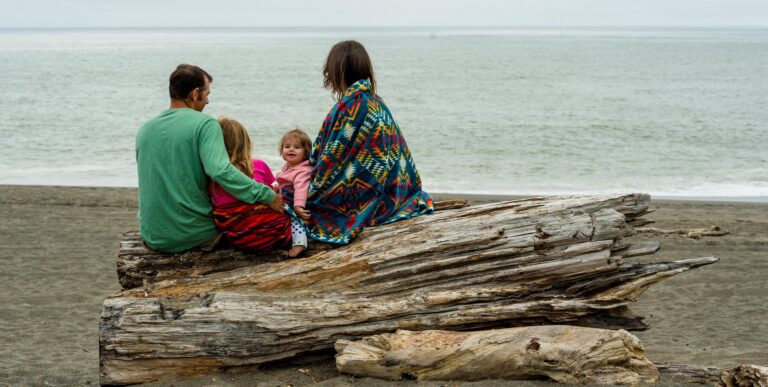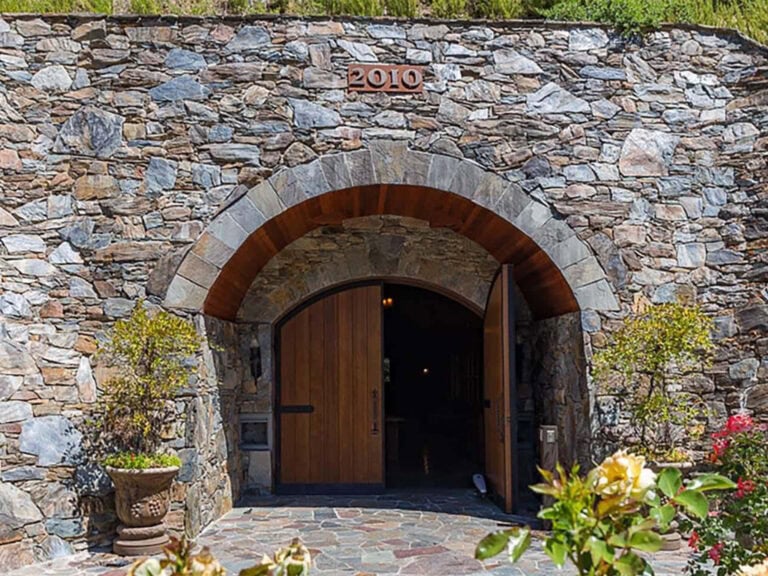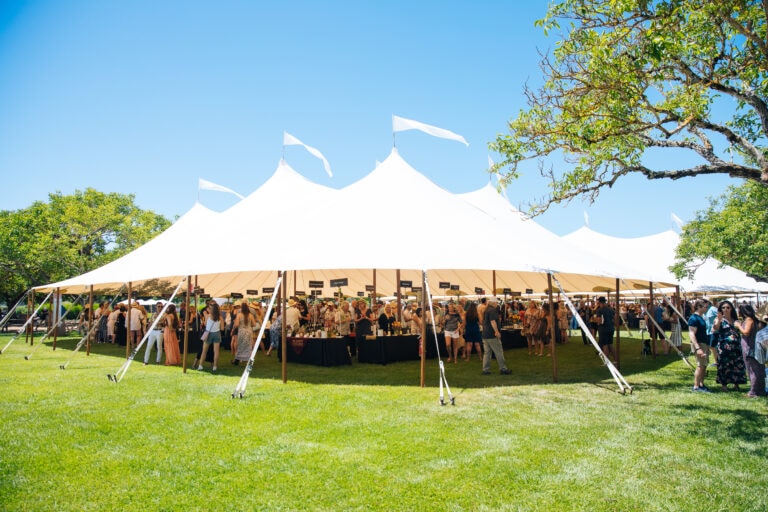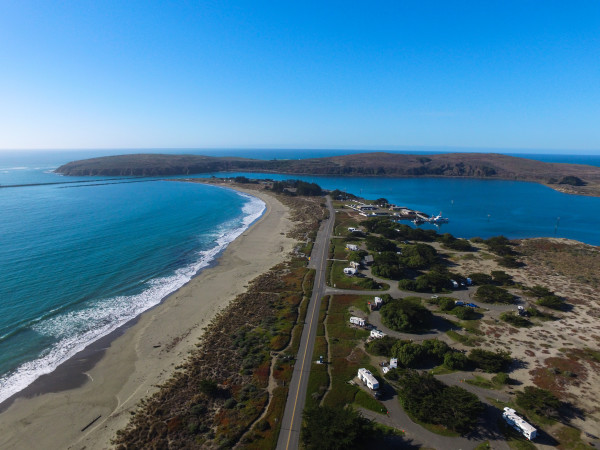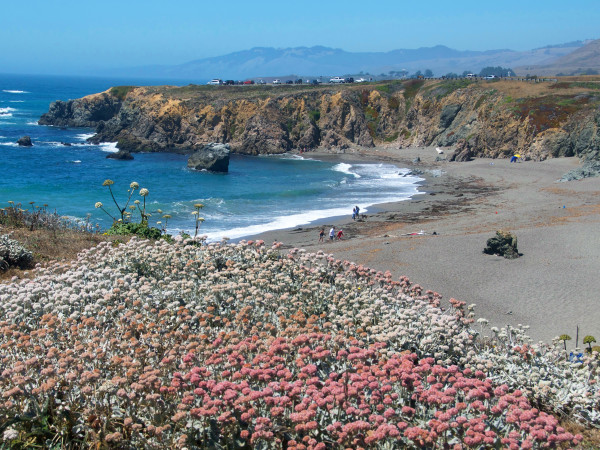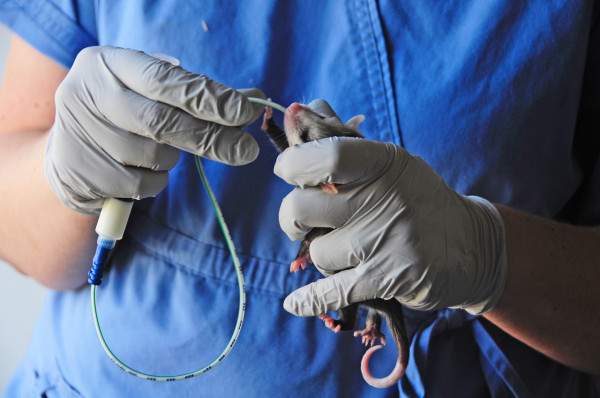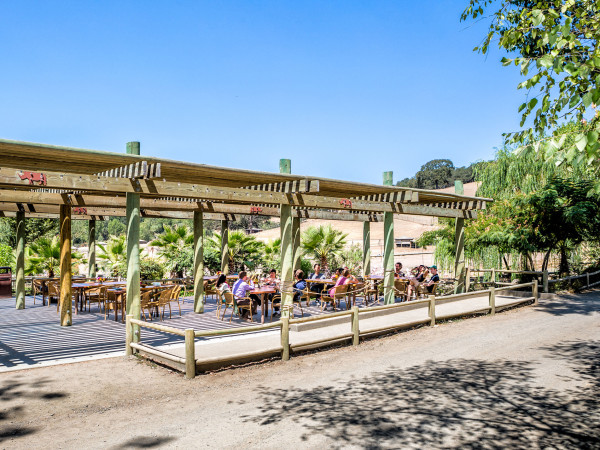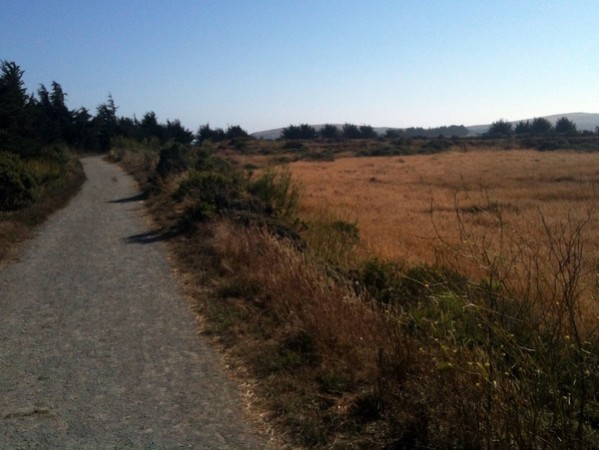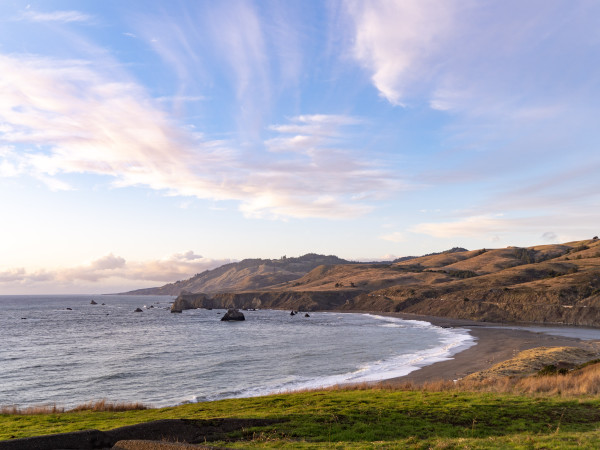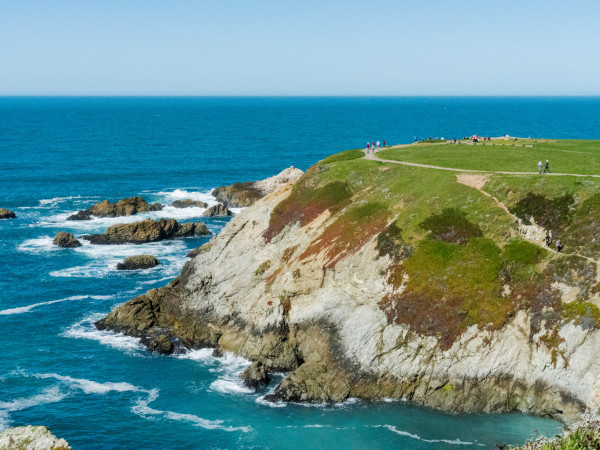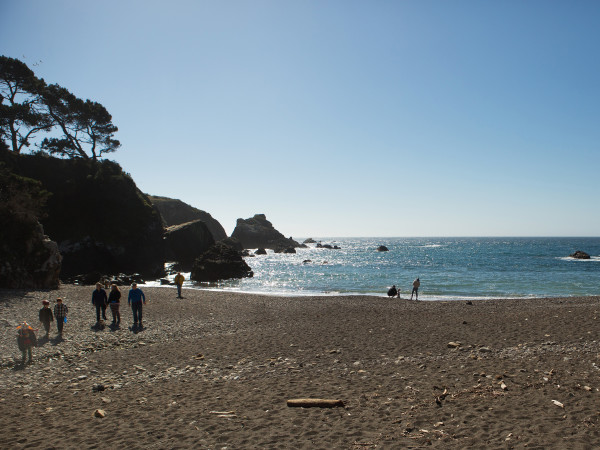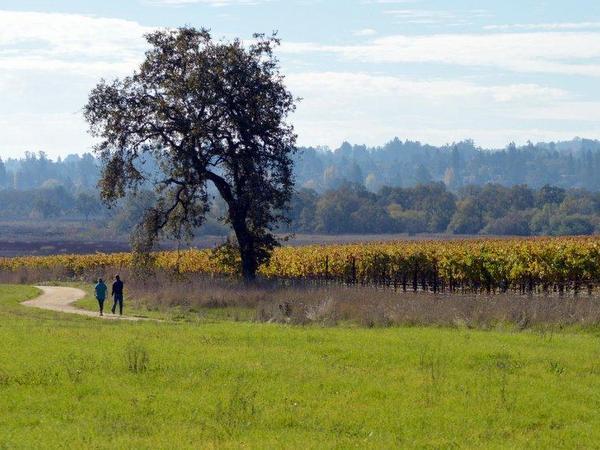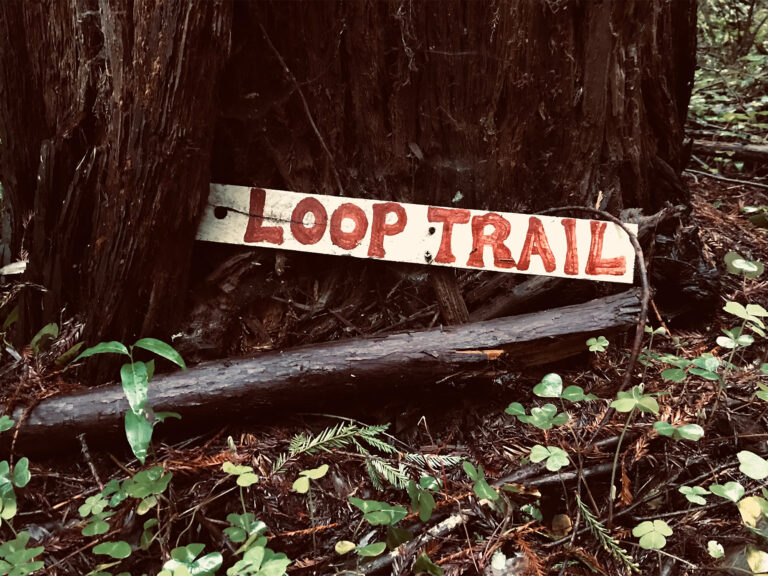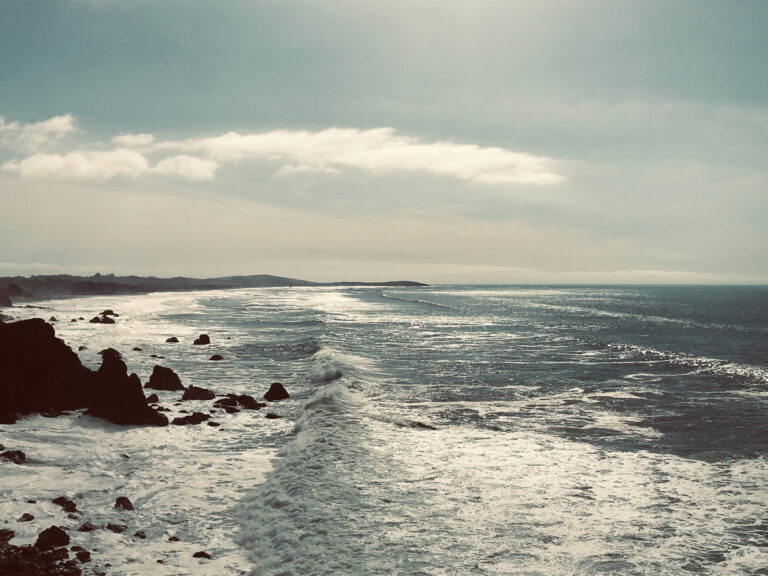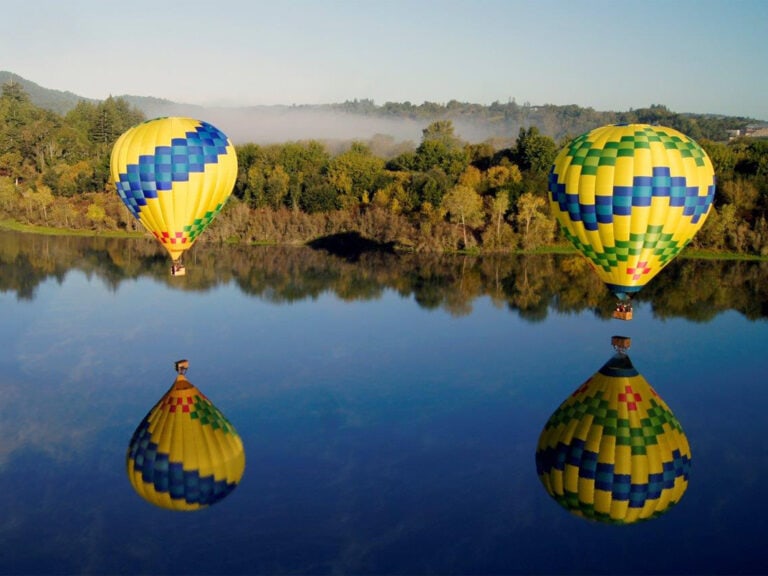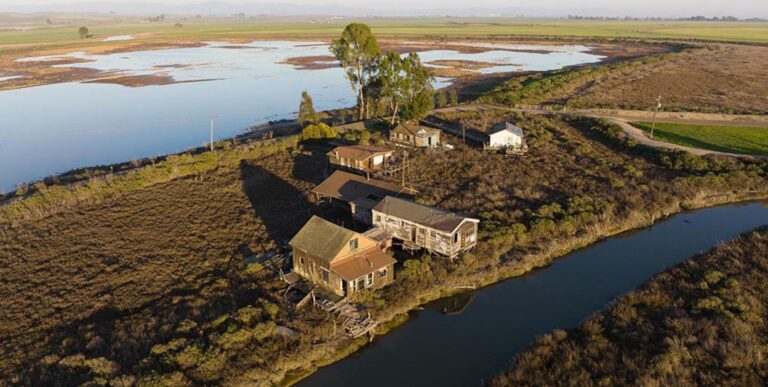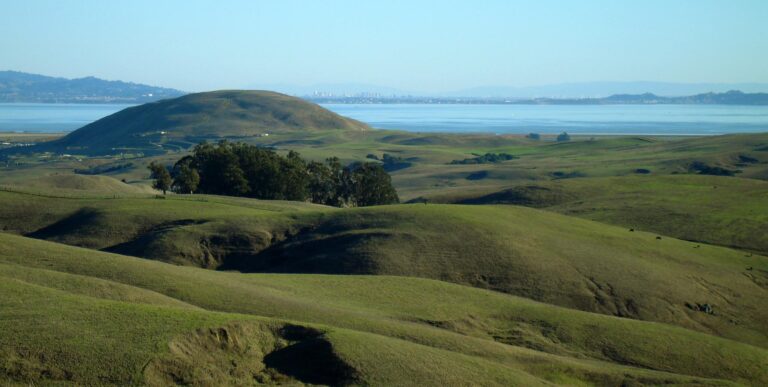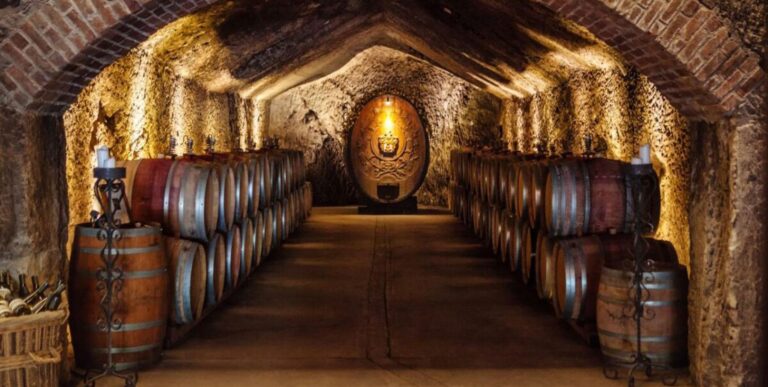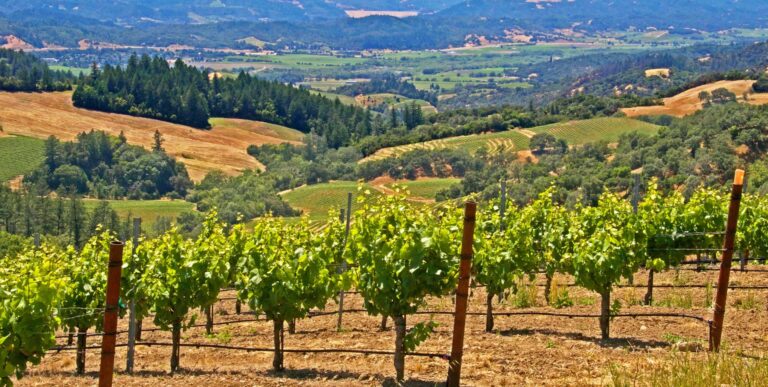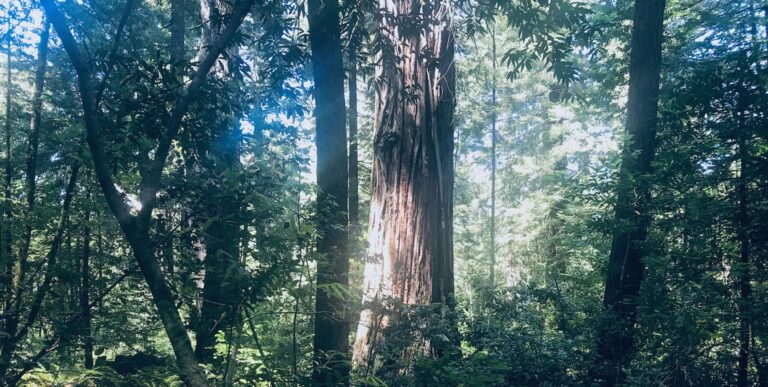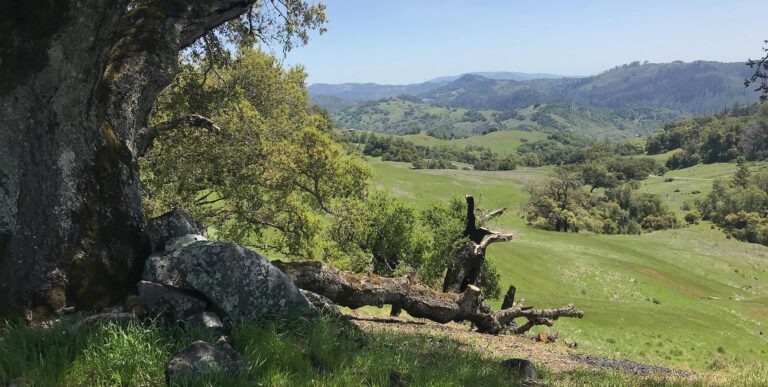Sonoma County Wildlife You Can Spot Each Season
Sonoma County is celebrated for its gorgeous landscapes which support a wide array of mammals, birds, and more — and one of the great joys of visiting this area is spotting these creatures. Experience Sonoma County’s open spaces and enjoy safely observing the native animals from afar.
Just remember, when visiting Sonoma County’s open spaces, trails, state and regional parks, and beaches, it’s important to adhere to the Leave No Trace Seven Principles, which include efforts to keep wildlife wild. In order to avoid injury to wild creatures and yourself, observe and photograph them from afar, using a telephoto lens and/or binoculars. Together, we can protect and preserve the beauty and natural resources of Sonoma County for generations to come.
Here are some exciting ways to spot wildlife throughout the year in Sonoma County, California.
Whale Watching: Mid-Winter Through Spring
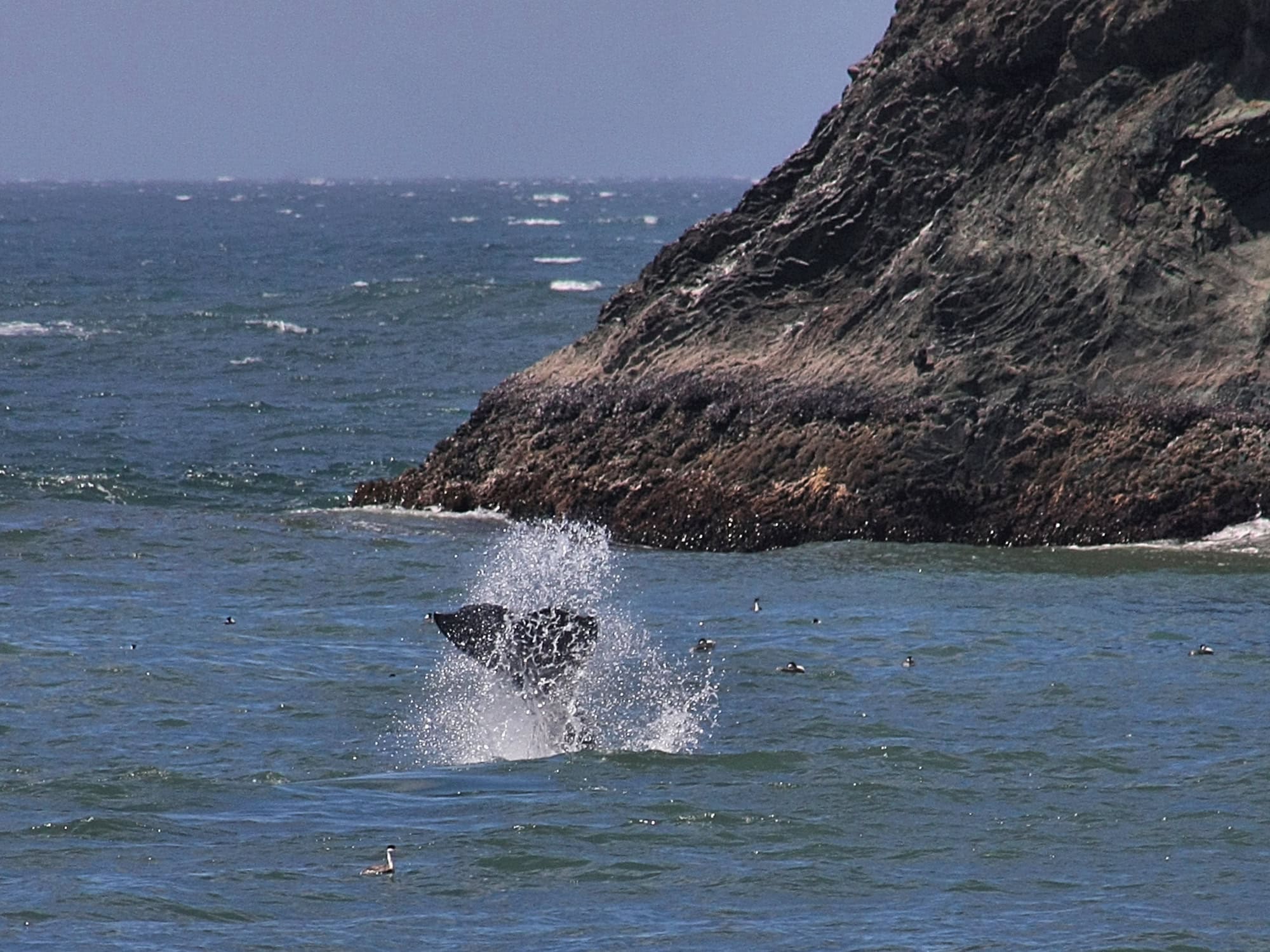
The annual north-to-south gray whale migration blows through Sonoma County from January to May, with good opportunities for whale spotting all along the Sonoma Coast.
Traveling along Highway 1, some key Sonoma Coast whale-watching spots are Bodega Head, Stillwater Cove Regional Park, Salt Point State Park, the six public access trails at The Sea Ranch, and Gualala Point Regional Park.
Otter Spotting: Late Winter & Early Spring
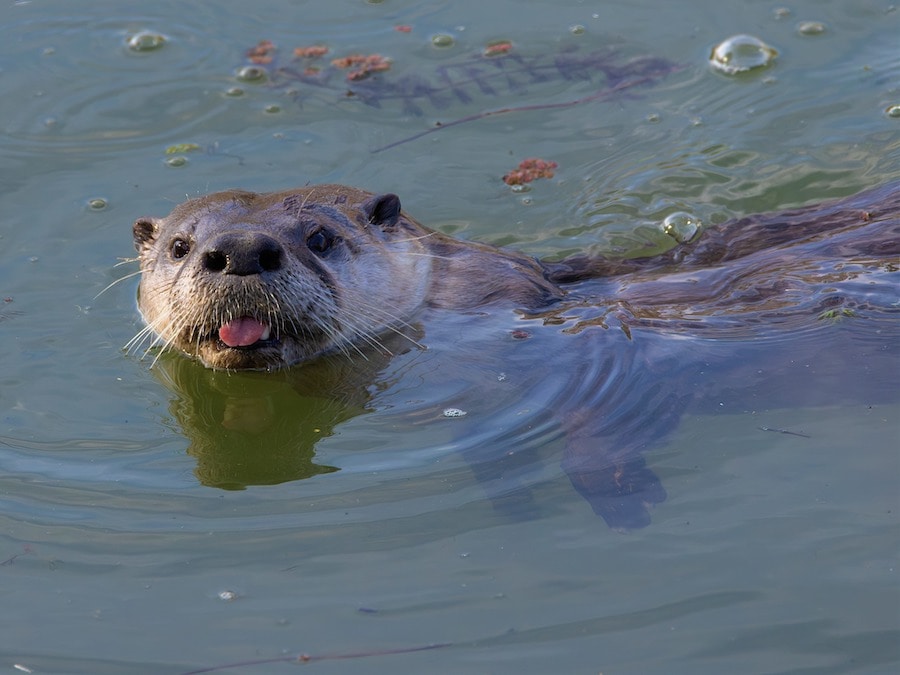
February through March, female river otters are in dens under fallen trees near rivers and streams to have a litter of one to four pups who stay by their sides for the next year. Year-old male pups see this period of parental distraction as a good opportunity to explore outdoors alone for the first time, so keep an eye out for adventurous otter pups (and the occasional fishing mom).
Here are some beautiful Sonoma County places to explore and try to glimpse native otters: Spring Lake Regional Park, the Petaluma, Russian, and Gualala Rivers, or the coastal streams in Gualala Point Regional Park.
The Bay Area-based River Otter Ecology Project invites you to become an “otter spotter” by posting your otter sightings on its interactive map.
Seal Seeking: Spring & Summer
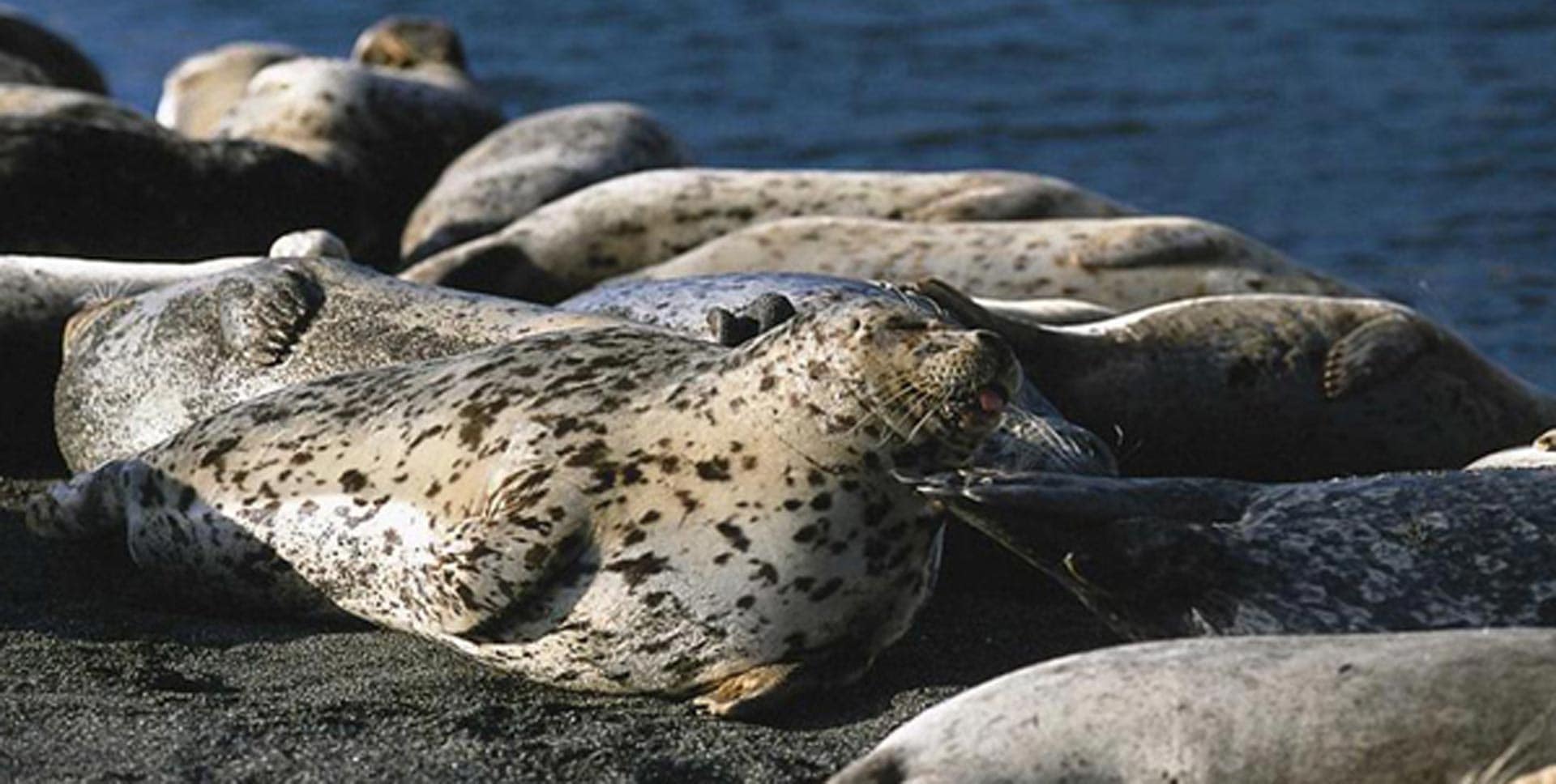
Each spring, a large sand spit builds at the mouth of the Russian River on Goat Rock Beach in the Sonoma Coast State Park, providing Pacific harbor seals with an ideal rookery — an area where they feel safe to birth, rear pups, and forage for food.
Seal pupping season begins in March, reaches a peak during the last week of April, and continues through May. Mother seals spend four to six weeks bonding with their pups, then leave them to adapt naturally to independence. While the little pinnipeds and their moms are together, it’s crucial that you are quiet and keep your distance while observing. If a mother seal perceives a threat, she may flee and not return, leaving her offspring vulnerable to predators.

From March through Labor Day, Goat Rock Beach is safeguarded by the Stewards of the Coast & Redwoods volunteer Seal Watch, who help protect the seals by educating visitors. Come to this special spot to see Pacific harbor seals lolling on the sand, basking in the sun, and bobbing in the water, or consider joining Seal Watch as a volunteer.
Wildlife Spotting All Year Long
Birdwatching in Sonoma County Regional Parks
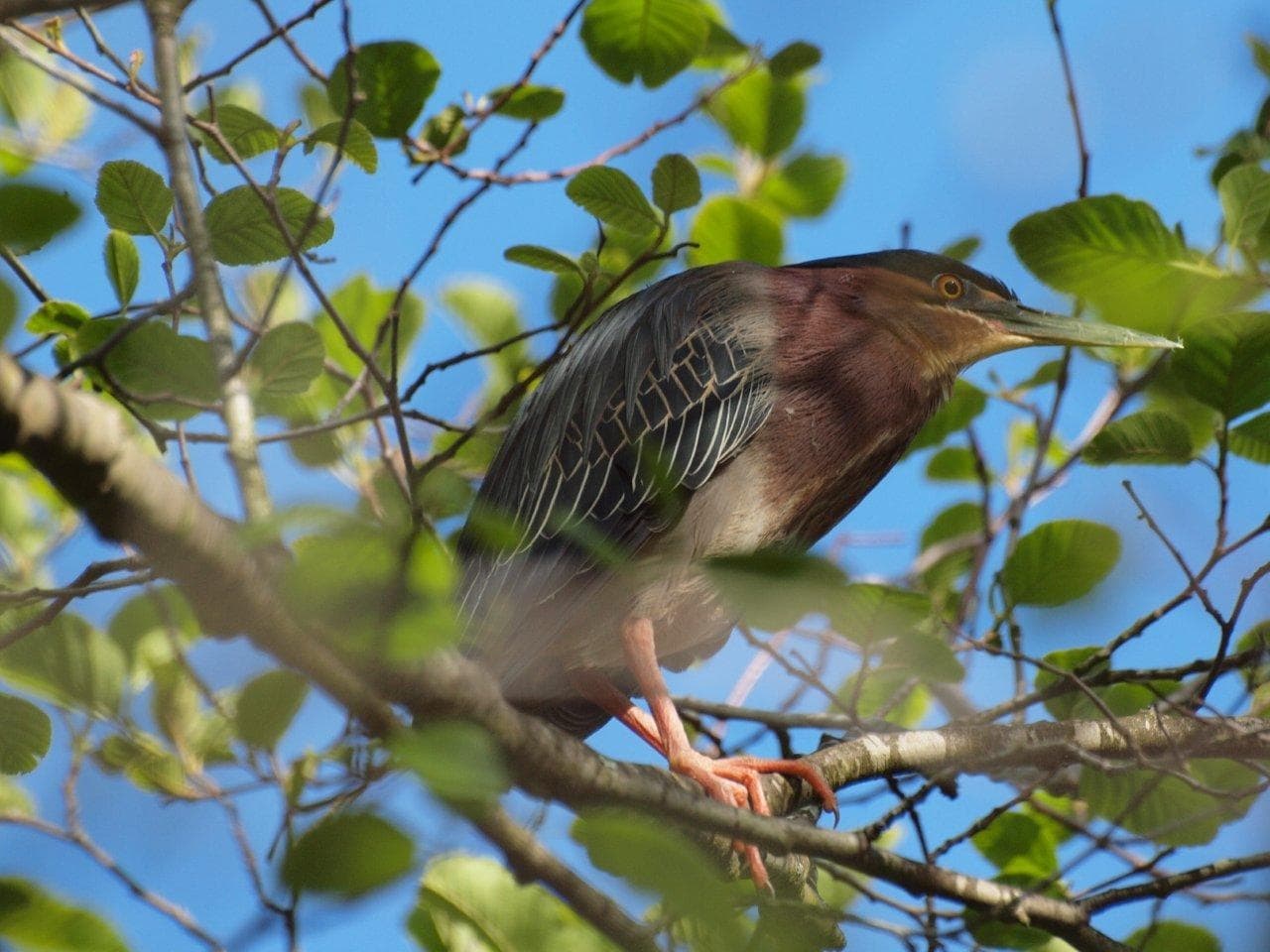
The songs, the flutter of wings across the sky, the intricate nests — who doesn’t love to spot wild birds in their natural habitat? Head to any of the 50 regional parks, trails, and open spaces in Sonoma County and keep your eyes peeled for feathered friends.
When roaming the hills, grasslands, and forests of 320-acre Spring Lake Regional Park in Santa Rosa, you can see an array of winged marvels like towhees, warblers, finches, sparrows, and orioles, as well as ducks, hawks, and herons.

Sebastopol’s 1.8-mile Laguna de Santa Rosa Trail is Sonoma County’s largest freshwater wetland and home to 200 species of birds. Here, you’re bound to see woodpeckers, bluebirds, and hawks, as well as warblers, finches, or wild turkey.
The roughly one-mile Bird Walk Coastal Access Trail in Bodega Bay runs along a restored saltwater marsh, circles two ponds, and offers coastal views before connecting with Doran Regional Park. Keep a lookout for geese, ducks, and gulls, as well as sandpipers, grebes, swallows, phoebes, and hummingbirds.
Tide Pools Along the Sonoma Coast

The Sonoma Coast is a wonderland of tide pools — little wells of eroded rock that are exposed at low tide and become fascinating mini ecosystems to observe with marine life like sea anemones, hermit crabs, sea stars, chitons, limpets, mussels, tiny fish, and other colorful creatures.
The largest concentration of tide pools can be found at 6,000 acre Salt Point State Park, where erosion causes tafoni, a honeycomb-type network of pits, knobs, and ridges in the sandstone rocks.
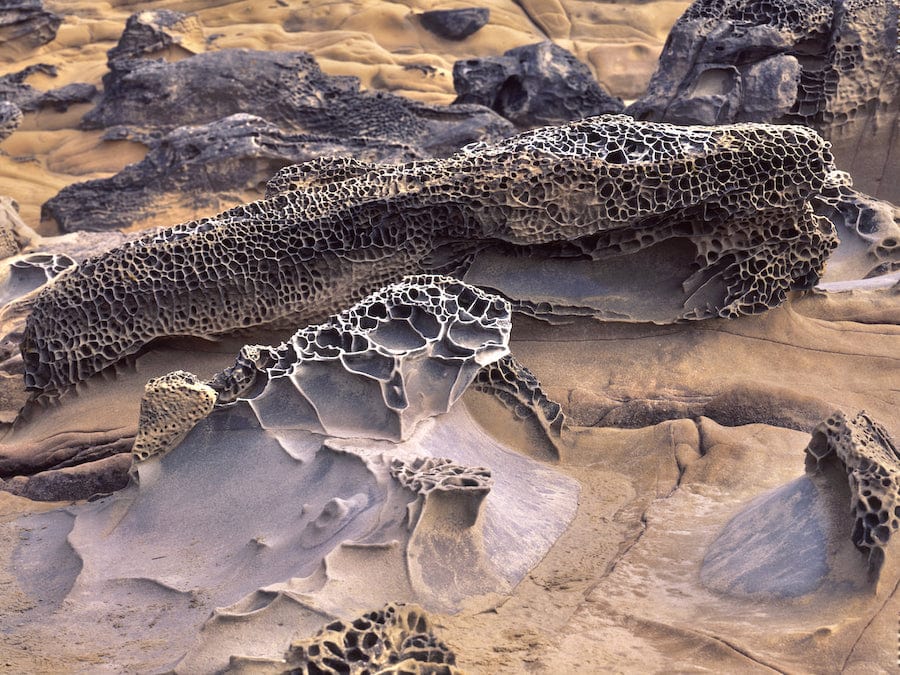
At the southern end of Sonoma Coast State Park in Bodega Bay, you’ll also find clusters of tide pools along the shore at Doran Regional Park and Schoolhouse Beach, as well as at Pinnacle Gulch. Remember to wear shoes with grippy soles, and walk with care along rocks that may be slippery or jagged.
Sonoma County Wildlife Rescue, Petaluma
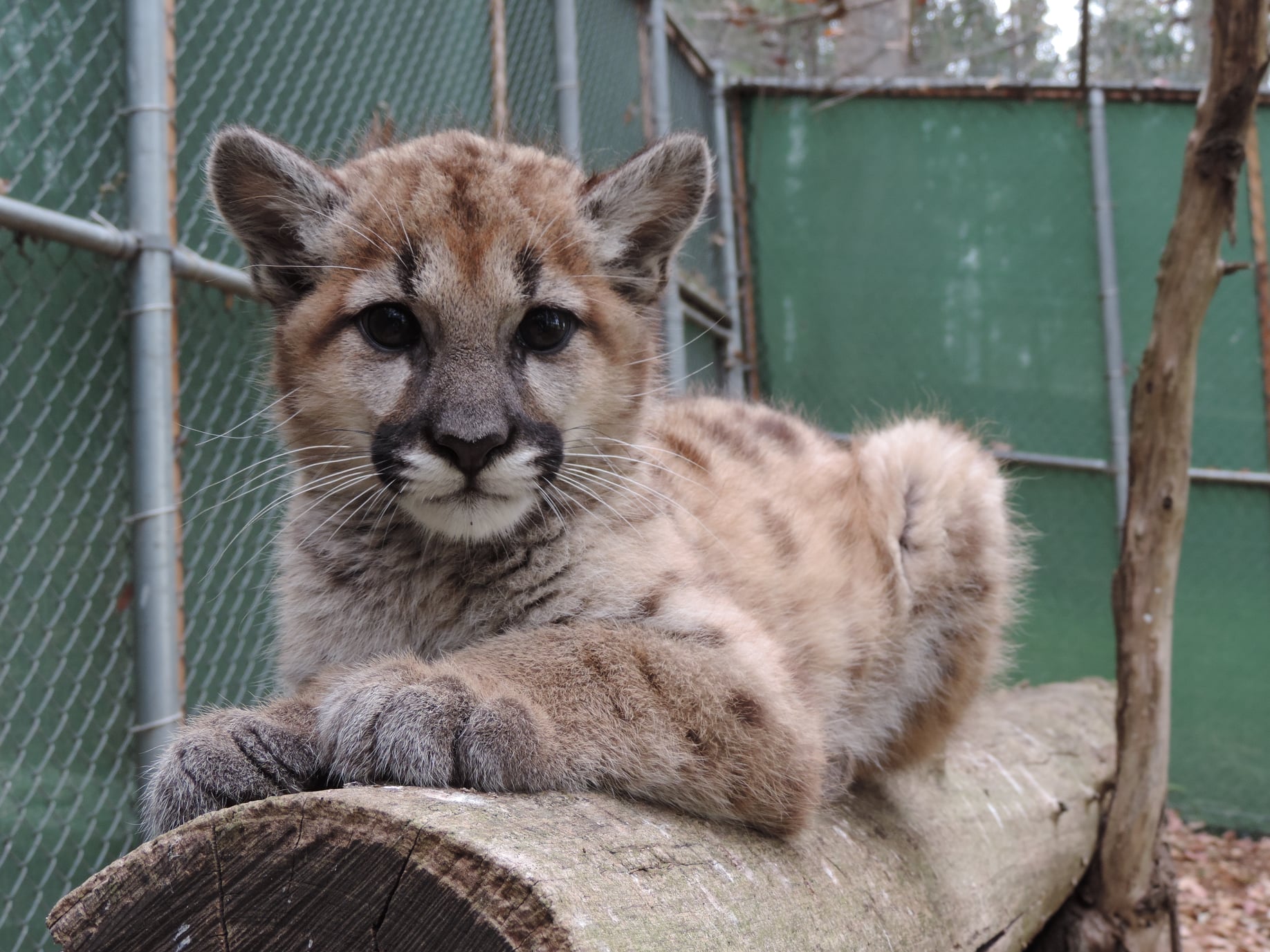
Dedicated to the rescue, rehabilitation, and release of injured and orphaned wildlife, Sonoma County Wildlife Rescue (SCWR) takes in native foxes, coyotes, wildcats, raccoons, owls, bats, skunks, opossums, beavers, and even badgers. When animals aren’t able to be returned to the wild, they often become Enrichment Ambassadors for SCWR, serving as a source of wildlife education and connection to the natural world.
You can meet these ambassadors on guided tours of the Petaluma facility by appointment. Public tours are given on Saturdays, and private behind-the-scenes tours can also be arranged in advance. Visit the Sonoma County Wildlife Rescue Tours page for information, and call (707) 992-0274 to reserve a spot.
Safari West Wildlife Preserve & African Tent Camp, Santa Rosa
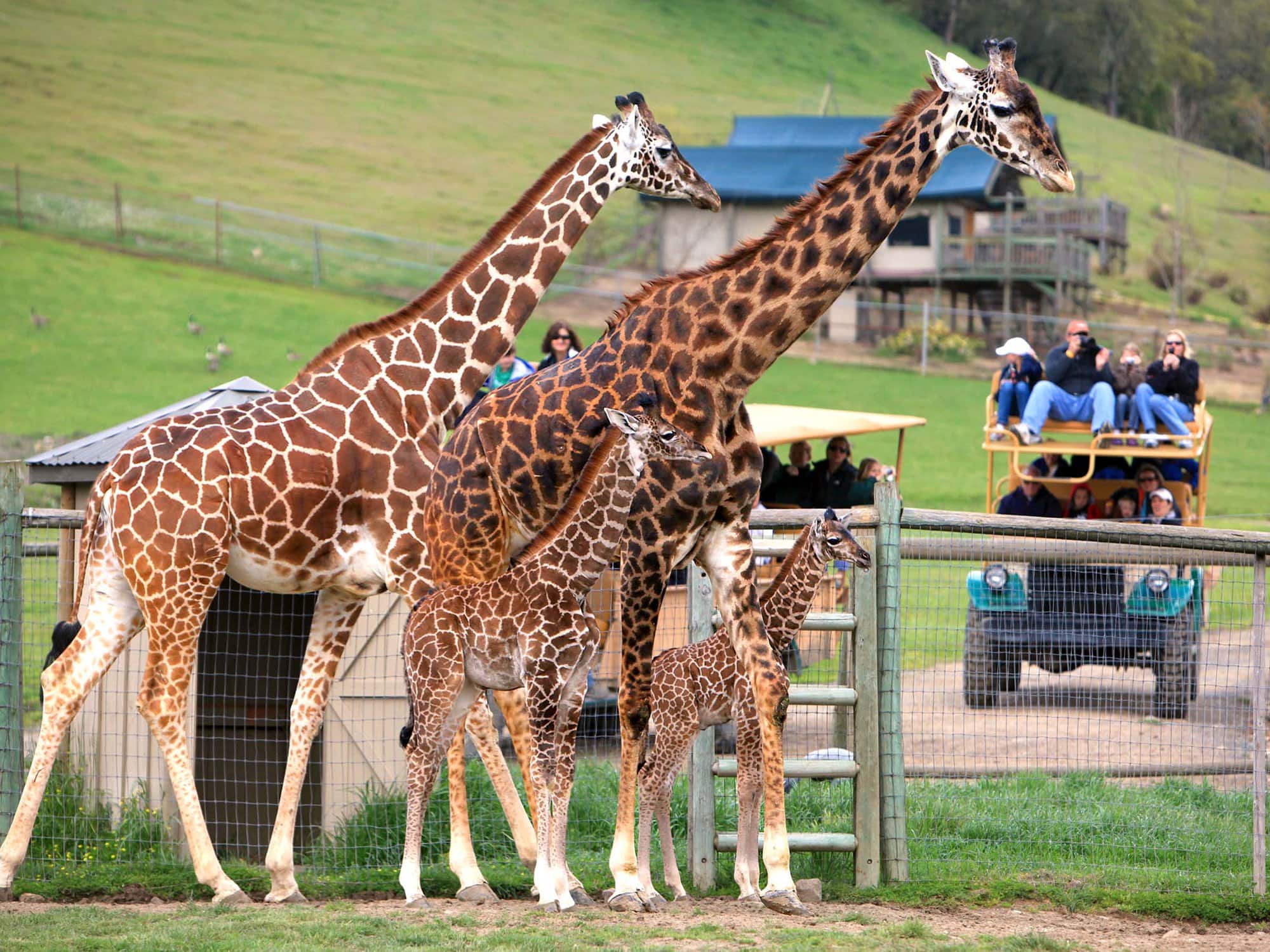
Known as “the Sonoma Serengeti,” this 400-acre wildlife park is the closest you can come to Africa without actually going there. Home to more than 90 different species and 900 animals, including giraffes, Cape buffalo, antelope, lemurs, rhinos, and exotic birds — this park brings you face-to-face with creatures that are fascinating, beautiful, and in some cases, critically endangered.
You can spend a few hours or a few days here, enjoying a variety of guided jeep tours, dining experiences, and even overnight stays in one of the park’s 30 luxurious safari tents. Imported from Botswana, each overnight luxury tent sports a private viewing deck, bathroom, hardwood floors, and the exciting sights and sounds of wildlife.
Places Mentioned
THIS IS WINE COUNTRY.
Share your experience using #SonomaCounty or #LifeOpensUp
